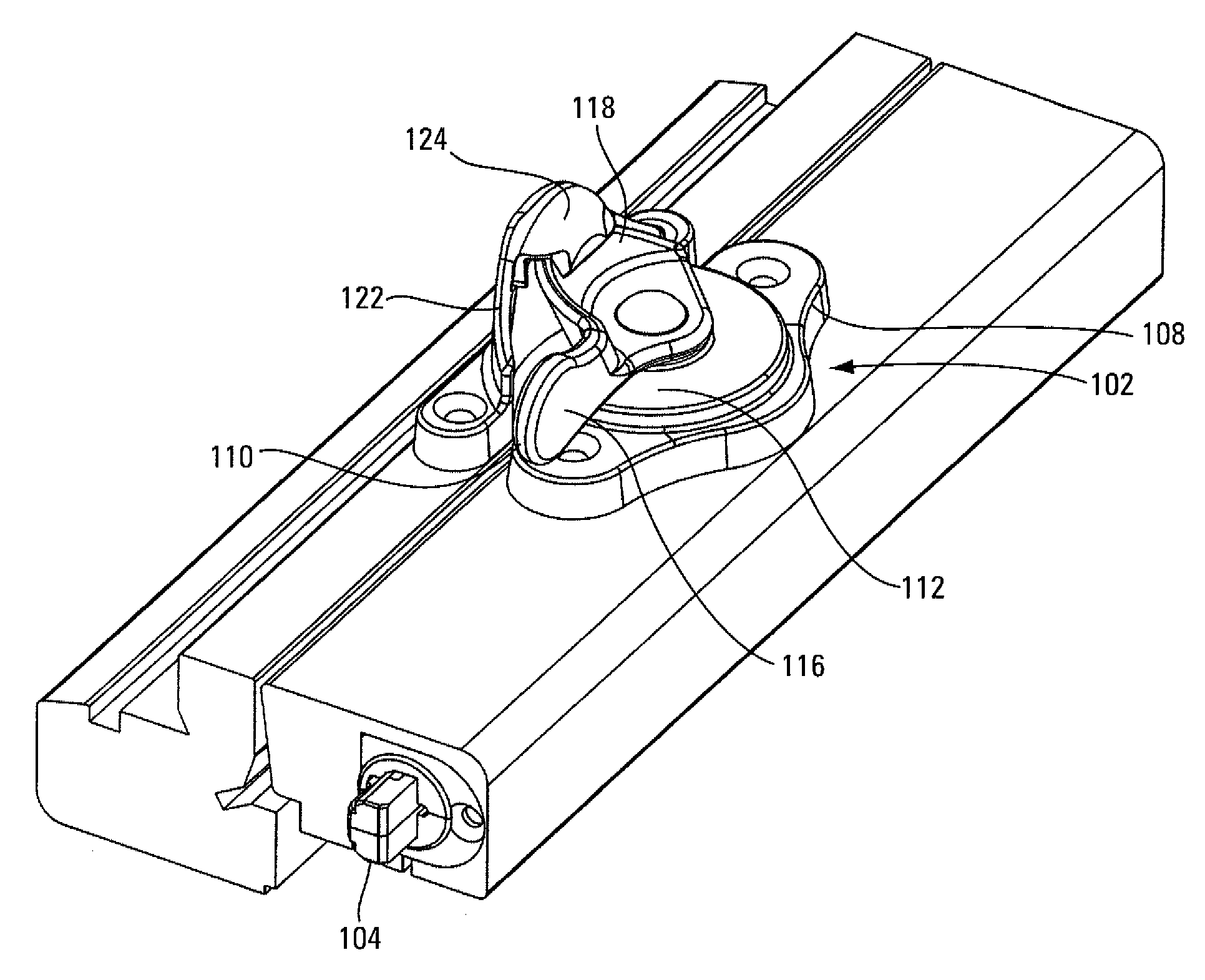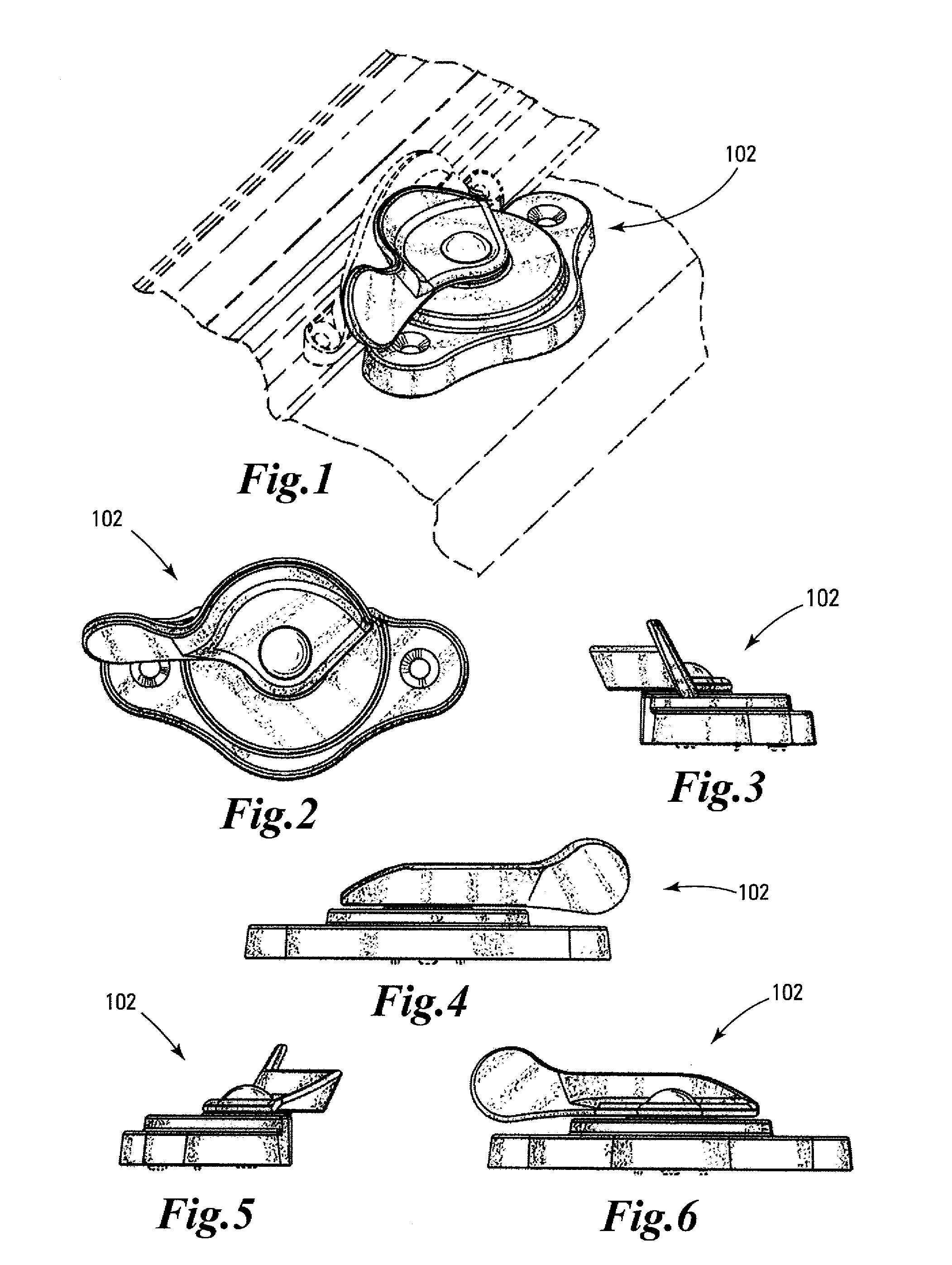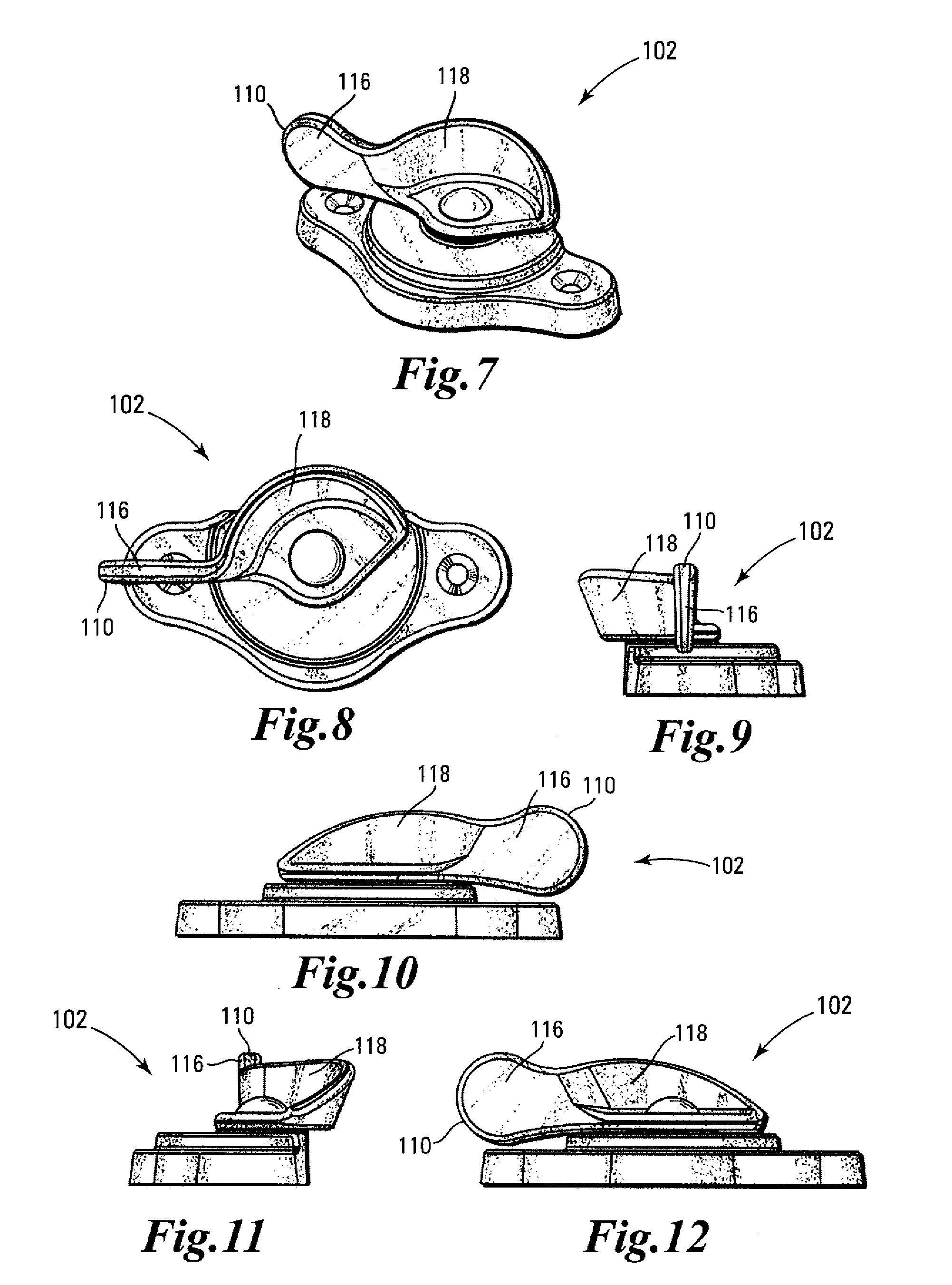Integrated lock and tilt-latch mechanism for a sliding window
a sliding window and lock technology, applied in the field of window locks, can solve the problems of poor washability of traditional double-hung window designs, inconvenient operation, and poor washing
- Summary
- Abstract
- Description
- Claims
- Application Information
AI Technical Summary
Benefits of technology
Problems solved by technology
Method used
Image
Examples
Embodiment Construction
[0087]Locking tilt-latch assembly 100 is generally mounted onto double-hung window, as depicted in FIG. 13. As depicted in FIG. 14, locking tilt-latch assembly 100 generally includes actuator assembly 102, tilt-latch assemblies 104, and linking member 106. Actuator assembly 102 generally includes base assembly 108 and control lever 110. Base assembly 108 is defined by baseplate 112 and base housing 114. In an example embodiment, baseplate 112 and base housing 114 are assembled together such that baseplate 112 defines the top of base assembly 108, as depicted in FIG. 15. Control lever 110 has handle 116, sweep cam 118, and shank 120. Sweep cam 118 is generally tapered away from handle 116. As control lever 110 rotates, sweep cam 118 engages or disengages keeper 122. When control lever 110 is in a locked position, as depicted in FIG. 15, sweep cam 118 is positioned under and within locking tab 124 of keeper 122. Inside sash 310 of double-hung sash window 312 is thereby substantially p...
PUM
 Login to View More
Login to View More Abstract
Description
Claims
Application Information
 Login to View More
Login to View More - R&D
- Intellectual Property
- Life Sciences
- Materials
- Tech Scout
- Unparalleled Data Quality
- Higher Quality Content
- 60% Fewer Hallucinations
Browse by: Latest US Patents, China's latest patents, Technical Efficacy Thesaurus, Application Domain, Technology Topic, Popular Technical Reports.
© 2025 PatSnap. All rights reserved.Legal|Privacy policy|Modern Slavery Act Transparency Statement|Sitemap|About US| Contact US: help@patsnap.com



